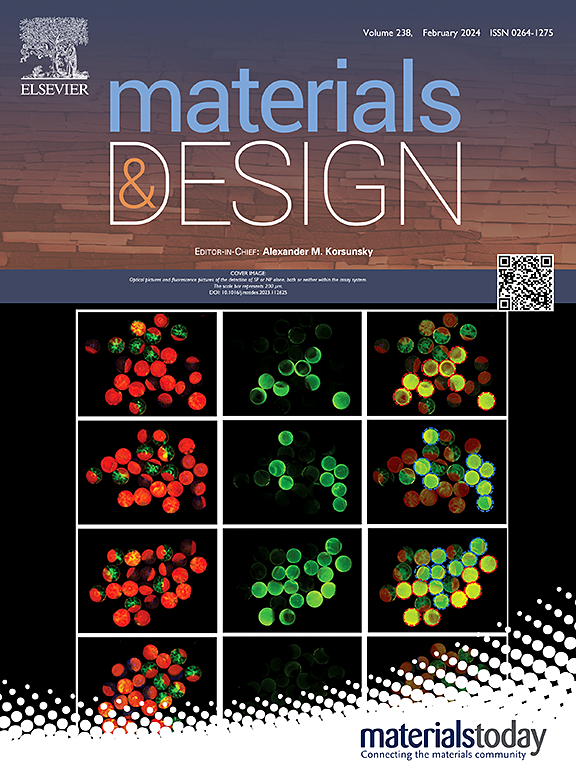crmnnfeconi高熵合金在超声振动下的快速非晶化
IF 8.4
引用次数: 3
摘要
由于独特的设计理念,高熵合金(HEAs)表现出不同寻常的性能,并引领着一个新兴的新领域。在这项工作中,我们证明了在20000hz的超声振动处理(UVT)下,典型的面心立方晶相CoCrFeNiMn HEA可以很容易地转变为非晶相。不同UVT能量处理后的样品具有明显的孪晶、层错带、六边形紧密堆积相带甚至非晶态带等纳米层次特征。超声振动诱导非晶化的主要机制是晶界缺陷密度达到临界水平时晶粒细化促进非晶相的形成。此外,在高应变速率下,超声振动容易引起机械失稳,在晶粒内部产生非晶相。由于UVT的作用,HEA样品的微观结构发生了变化,特别是非晶相的产生,其屈服强度和硬度等力学性能得到了显著提高。这种快速非晶化过程不仅提供了HEA的候选强化机制,而且为揭示悬而未决的晶体-非晶转变问题提供了一种新方法。本文章由计算机程序翻译,如有差异,请以英文原文为准。
Rapid amorphization of CrMnFeCoNi high-entropy alloy under ultrasonic vibrations
Due to the distinct design concept, high-entropy alloys (HEAs) exhibit unusual properties and lead an emerging new field. In this work, we show that a typical face-centered cubic crystalline phase CoCrFeNiMn HEA can be readily transformed into the amorphous phase under the ultrasonic vibration treatment (UVT) at a frequency of 20000 Hz. The nanoscale hierarchical features include twins, stacking faults bands, hexagonal-close packed phase bands and even amorphous bands can be obviously identified in samples treated by different UVT energies. The dominant mechanism of ultrasonic vibration-induced amorphization is that the grain refinement promotes the formation of amorphous phases when the defect density at the grain boundaries reaches a critical level. In addition, the mechanical instability is easily induced by ultrasonic vibration at high strain rate to generate amorphous phase inside the grains. As a consequence of UVT, the HEA samples revealed significant mechanical performance improvement owing to the microstructure evolution especially the generation of amorphous phase, such as yielding strength and hardness. This rapid amorphization process provides not only a candidate strengthening mechanism for HEA, but also a novel approach to unveil the pending crystal-amorphous transition problem.
求助全文
通过发布文献求助,成功后即可免费获取论文全文。
去求助
来源期刊
自引率
0.00%
发文量
0
期刊介绍:
Materials and Design is a multidisciplinary journal that publishes original research reports, review articles, and express communications. It covers a wide range of topics including the structure and properties of inorganic and organic materials, advancements in synthesis, processing, characterization, and testing, as well as the design of materials and engineering systems, and their applications in technology.
The journal aims to integrate various disciplines such as materials science, engineering, physics, and chemistry. By exploring themes from materials to design, it seeks to uncover connections between natural and artificial materials, and between experimental findings and theoretical models. Manuscripts submitted to Materials and Design are expected to offer elements of discovery and surprise, contributing to new insights into the architecture and function of matter.

 求助内容:
求助内容: 应助结果提醒方式:
应助结果提醒方式:


